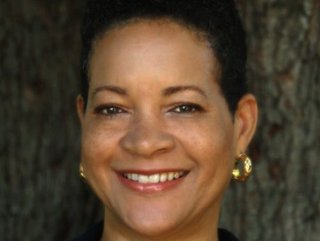NTT Data: Breaking Barriers in Tech and Aiding Women in STEM

Women continue to be underrepresented across the technology sector, with the data centre industry in particular struggling to hire and retain women.
In 2021, it was reported that more than three-quarters of data centre operators said that less than 10% of their workforce were women. This figure was unchanged since 2018. Likewise, in 2019, 25% of managers of enterprise data centres found that there were no women among their design or operational staff.
There are myriad benefits to having a diverse workforce and we explore, with insights from NTT Data, how data centre companies can diversify and better support their female workforces.
Using AI to dismantle gender pay gaps
Terri Hatcher, Chief Diversity and Inclusion Officer at NTT Data, suggests several ways AI can help to address the gender pay gap. She tells Data Centre Magazine in an exclusive interview that AI can help to determine at what scale a candidate is qualified based on key competencies, skills, years of experience and potential - all without triggering bias.
With data centre operations expanding rapidly worldwide on account of AI-based technologies, ensuring an equitable working environment is essential.
“At the end of the day, it is about skills and potential not credentials,” she says. “AI can also help determine at what point in the hiring process, diverse candidates are dropping.”
Another way for businesses to diversify is to have tools in place that guide managers to make decisions that are equitable, particularly when it comes to promotions, in addition to highlighting anomalies that drive out bias.
“Any way organisations decide to implement AI, leaders need to assume bias from the beginning and work to get representation for all parties impacted for an equitable outcome for your market, audience, stakeholders,” says Hatcher. “This way, business leaders can catch disparities proactively instead of reactively.”
AI can also be utilised to enable businesses to become more mindful of its gaps in equality and diversity. By leveraging AI to analyse data in the hiring process, business leaders can assess their organisation to determine if they are providing what Hatcher describes as “diverse, equitable and inclusive outcomes.”
She says. “You may discover that not only are women or candidates from other minority groups dropping from the hiring process at a certain point, but that it’s occurring for specific types of jobs or in particular areas.”
The smart way to champion women in technology
Not amplifying female and marginalised voices in technology could lead to AI models with greater biases within its data that reflect inequalities within society. This could lead to undesired, or damaging, outcomes for a business.
“If you look at your industry, your employee population and understand the demographics of your market and its potential, then you need to ensure you have representation from those demographics in the room to maximise that potential,” Hatcher says.
“Having women present when making organisational decisions and long-range plans is essential to ensure the decision-making processes that impact business imperatives such as hiring, promotion and compensation discussions are being accurately and equitably discussed.”
When it comes to businesses taking appropriate action, Hatcher says that championing women in technology and AI-led jobs comes down to reskilling and upskilling.
She adds: “Rather than externally hiring talent, they should invest in developing their in-house talent and create opportunities for growth within the company.
“AI has contributed to the removal of degree requirements, potentially expanding opportunities for women to enter STEM fields – again, making it less about credentials and more about skills and potential. In turn this has broadened access to STEM careers to a more diverse global audience.”
“Additionally, mentoring programs, job rotational programs, and leadership development and succession planning programs are essential in creating and sustaining a diverse and equitable organisation at all levels.”
NTT Data has been active in this regard via its active employee resource group specifically for women, called Women Inspire NTT DATA (WIN). It aims to create an increased sense of belonging within an organisation and connect women with resources that can support them in both their career and personal lives.
The organisation hosts a range of events and mentorship programmes to nurture personal and professional development for its female workforce. Additionally, it supports recruitment and retention of highly talented women and promotes and supports diversity and inclusion initiatives that recognise and respect the individuality of all NTT DATA employees.
Hatcher says: “Leaders within an organisation should see these groups not as a formality, but as an important part of supporting a gender-diverse and inclusive business.”
******
Make sure you check out the latest edition of Data Centre Magazine and also sign up to our global conference series - Tech & AI LIVE 2024
******
Data Centre Magazine is a BizClik brand






